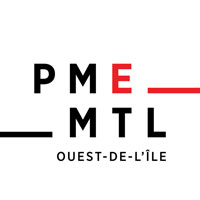Tax season is fast approaching and our clients are asking us questions about the emergency assistance programs that PME MTL managed during the pandemic. To clarify things, our accountant, Simon Bédard, answers your questions regarding their tax impacts for the year 2020.
Generally, under the Income Tax Act, any financial aid obtained in the form of a direct subsidy from a government, municipality or other public authority will be taxable in the tax year in which the disbursement was made.
With respect to government loans, the amount obtained in the form of a loan will not be taxable.
Loan forgiveness under the Regional Relief and Recovery Fund (RRRF)
If the disbursement of your loan occurred before December 31, 2020 and you are eligible for forgiveness, you will have to add the forgiven portion of the loan to your subsidy income.
IMPORTANT: The written-off amount is conditional on repayment of the loan within the prescribed time period. If you are unable to repay the loan within the specified period, a deduction will be offered to you in the current year.
See the example below to better understand the tax treatment:
Example: You received in 2020 an RRRF loan of $40,000, of which $10,000 (25%) was forgivable. When you file your tax return, the government will tax you on the forgivable portion of the loan, even if you haven’t benefited from it yet. If you are unable to repay this loan on time, there will then be a tax deduction or credit in 2022 to rectify this.

Loan forgiveness under the Emergency Assistance Program for Small and Medium-Sized Businesses (PAUPME)
The Assistance for Businesses in Regions on Maximum Alert (AERAM) component is considered a subsidy. If you benefited from this program, you must reduce your operating expenses before taxes (GST and QST) according to the forgiveness calculations for the year 2020:
- Municipal and school taxes
- Rent (the portion not covered by another government program, such as the Canada Emergency Rent Subsidy (CERS)*)
- Interest paid on mortgage loans
- Utility expenses (e.g. electricity and gas)
- Insurance
- Telecommunications expenses
- Licensing and association fees
We suggest that you calculate all of your eligible invoices for the year 2020 (October to December) and apply the amount calculated to income or reduction of expenses.
Rent Subsidy (Canada Emergency Rent Subsidy (CERS))
Many of our businesses applied for the Canada Emergency Rent Subsidy (CERS) as part of the AERAM component of the PAUPME. Here are the two tax choices available:
- Use the assistance obtained to reduce operating expenses (rent).
- Add the assistance obtained to your subsidy income.
Rest assured that regardless of the option chosen, the impact on taxable income will be the same.
For more information on the government site.
TIP
Have your invoices on hand for 2021 if your business benefited from the AERAM component. It’s easy to loose track as the year passes!
---
This article was written by Simon Bédard, analyste financier à PME MTL Ouest-de-l'Île.
For all information concerning our assistance programs, visit our COVID-19 page.
